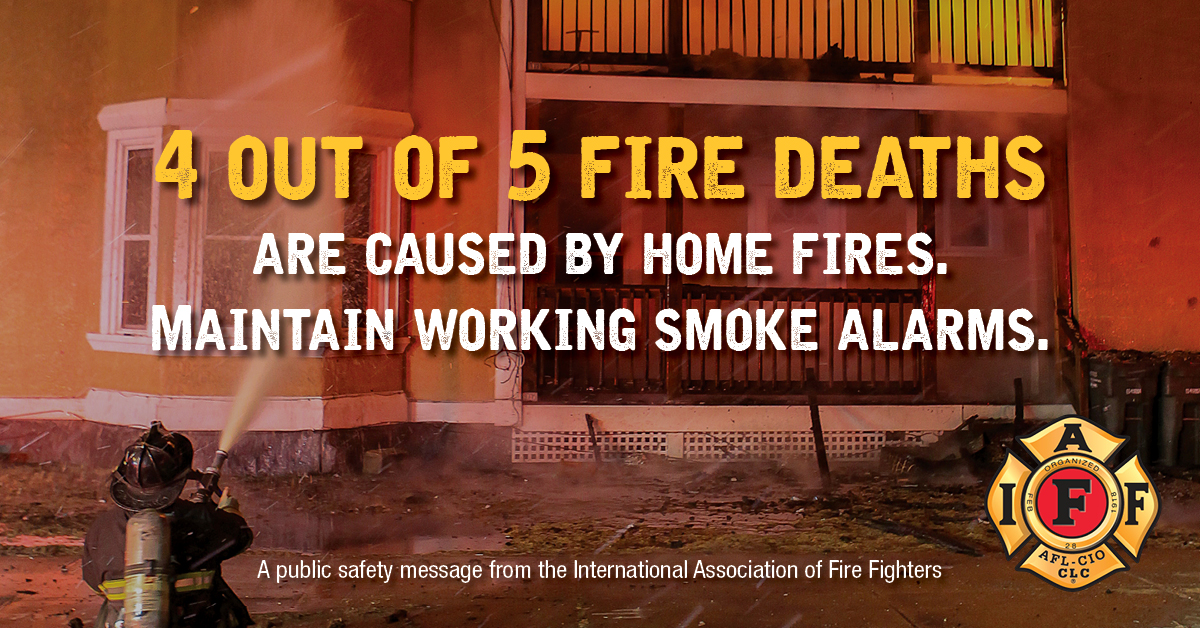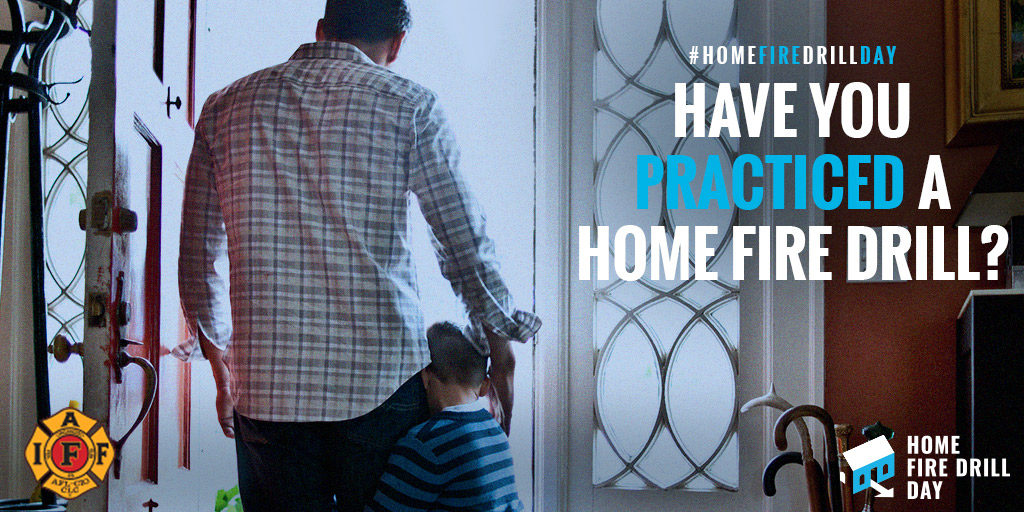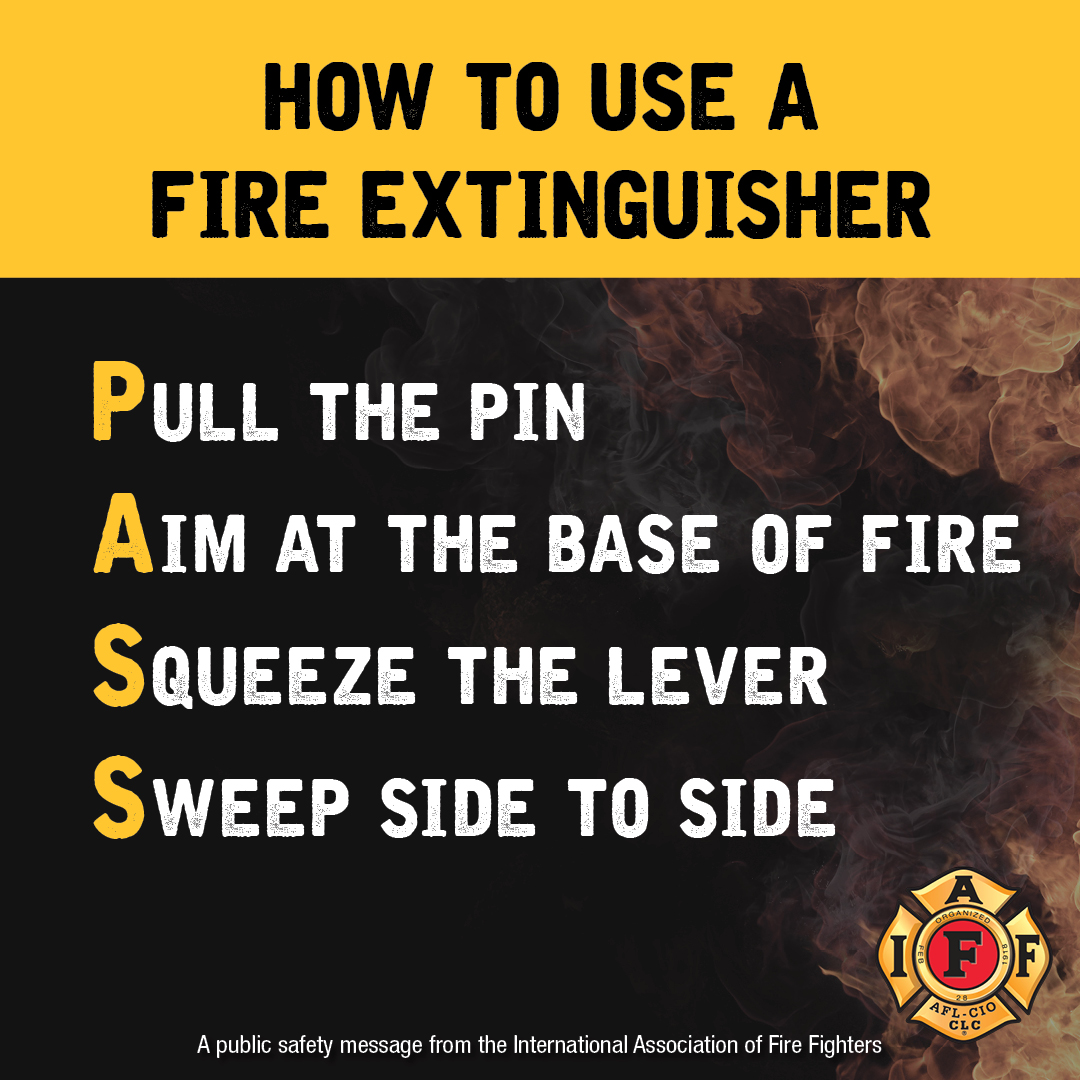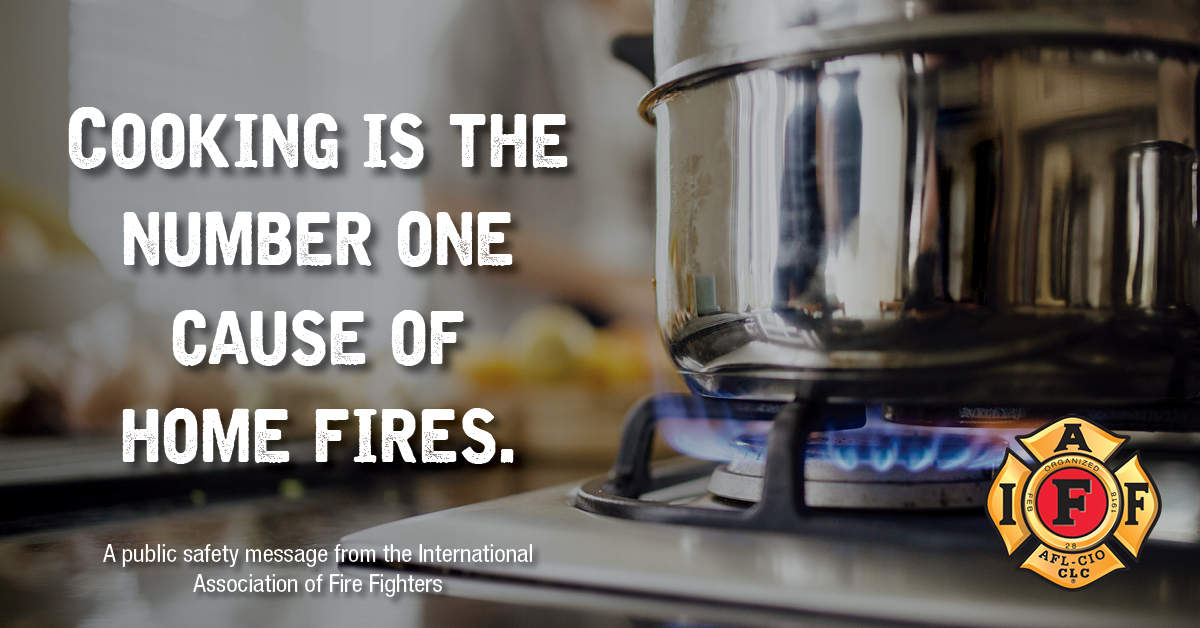As we know, home fires are one of the biggest public safety threats facing U.S. and Canadian families today, with one home fire reported every 86 seconds.
To educate the public about the importance of fire safety, National Fire Prevention Week was established and is observed in the United States and Canada during the week in which Oct. 9 falls.
Contact [email protected] with any comments or questions about using IAFF toolkits.
[vc_single_image image=”113174″ img_size=”full” alignment=”center” onclick=”link_image”][vc_single_image image=”86143″ img_size=”full” alignment=”center” onclick=”link_image”][vc_single_image image=”73016″ img_size=”full” alignment=”center” onclick=”link_image”][vc_single_image image=”73079″ img_size=”full” alignment=”center” onclick=”link_image”][vc_single_image image=”73106″ img_size=”full” alignment=”center” onclick=”link_image”]
[vc_single_image image=”113175″ img_size=”full” alignment=”center” onclick=”link_image”][vc_single_image image=”73080″ img_size=”full” alignment=”center” onclick=”link_image”][vc_single_image image=”73081″ img_size=”full” alignment=”center” onclick=”link_image”][vc_single_image image=”73044″ img_size=”full” alignment=”center” onclick=”link_image”][vc_single_image image=”73043″ img_size=”full” alignment=”center” onclick=”link_image”][vc_single_image image=”73152″ img_size=”full” alignment=”center” onclick=”link_image”]
 Learn About Fires
Learn About Fires
In just two minutes a fire can become life-threatening. In five minutes a residence can be engulfed in flames.
- Fire is FAST! In less than 30 seconds a small flame can turn into a major fire. It only takes minutes for thick black smoke to fill a house or for it to be engulfed in flames. (Note: Smoldering fires can fill a house up with smoke before any flames appear. One of the reasons that most people die from asphyxiation is that a smoldering fire occurs while they are sleeping. This is another reason to favor photoelectric alarms.)
- Fire is HOT! Heat is more threatening than flames. Room temperatures in a fire can be 100 degrees at floor level and rise to 600 degrees at eye level. Inhaling this super-hot air will scorch your lungs and melt clothes to your skin.
- Fire is DARK! Fire starts bright, but quickly produces black smoke and complete darkness.
- Fire is DEADLY! Smoke and toxic gases kill more people than flames do. Fire produces poisonous gases that make you disoriented and drowsy. Asphyxiation is the leading cause of fire deaths, exceeding burns by a 3-to-1 ratio.
Before a Fire
» Create and Practice a Fire Escape Plan
In the event of a fire, remember that every second counts. Escape plans help you get out of your home quickly. Twice each year, practice your home fire escape plan. Some tips to consider when preparing this plan include:
- Find two ways to get out of each room in the event the primary way is blocked by fire or smoke.
- A secondary route might be a window onto a neighboring roof or a collapsible ladder for escape from upper-story windows.
- Make sure that windows are not stuck, screens can be taken out quickly and that security bars can be properly opened.
- Practice feeling your way out of the house in the dark or with your eyes closed.
- Teach children not to hide from fire fighters.
- Remember, if the smoke alarm sounds, get outside and stay outside. If everyone is outside, let the 911 operator know that ASAP. Otherwise, let the first responders know upon their arrival.
» Smoke Alarms
A working smoke alarm increases your chances of surviving a deadly home fire.
- Test batteries monthly.
- Replace batteries in battery-powered and hard-wired smoke alarms at least once a year (except non-replaceable 10-year lithium batteries).
- Install smoke alarms on every level of your home, including the basement, both inside and outside of sleeping areas.
- Replace the entire smoke alarm unit every 8-10 years or according to manufacturer’s instructions.
- If there are frequent nuisance alarms from cooking, replace an ionization with either a photoelectric or a newer alarm listed for nuisance resistance.
» Smoke Alarm Safety for People With Access or Functional Needs
- Audible alarms for visually impaired people should pause with a small window of silence between each successive cycle so that they can listen to the instructions or voices of others.
- Smoke alarms with a vibrating pad or flashing light are available for the hearing impaired. Contact your local fire department for information about obtaining a flashing or vibrating smoke alarm.
- Smoke alarms with a strobe light outside the home to catch the attention of neighbors and emergency call systems for summoning help are also available.
» More Fire Safety Tips
- Make digital copies of valuable documents and records like birth certificates.
- Sleep with your door closed.
- Contact your local fire department for information on training on the proper use and maintenance of fire extinguishers.
- Consider installing an automatic fire sprinkler system in your residence.
During a Fire
- Crawl low under any smoke to your exit. Heavy smoke and poisonous gases collect first along the ceiling.
- Before opening a door, feel the doorknob and door. If either is hot, or if there is smoke coming around the door, leave the door closed and use your second way out.
- If you open a door, open it slowly. Be ready to shut it quickly if heavy smoke or fire is present.
- If you can’t get to someone needing assistance, leave the home and call 911 or the fire department. Tell the emergency operator where the person is located. If everyone is outside, let the 911 operator know that ASAP. Otherwise, let the first responders know upon their arrival.
- If pets are trapped inside your home, tell fire fighters right away.
- If you can’t get out, close the door and cover vents and cracks around doors with cloth or tape to keep smoke out. Call 9-1-1 or your fire department. Say where you are and signal for help at the window with a light-colored cloth or a flashlight.
- If your clothes catch fire, stop, drop, and roll – stop immediately, drop to the ground, and cover your face with your hands. Roll over and over or back and forth until the fire is out. If you or someone else cannot stop, drop, and roll, smother the flames with a blanket or towel. Use cool water to treat the burn immediately for three to five minutes. Cover with a clean, dry cloth. Get medical help right away by calling 9-1-1 or the fire department.
» Fire Escape Planning for Older Adults and People With Access or Functional Needs
- Live near an exit. You’ll be safest on the ground floor if you live in an apartment building. If you live in a multi-story home, arrange to sleep on the ground floor and near an exit.
- If you use a walker or wheelchair, check all exits to be sure you get through the doorways.
- Make any necessary accommodations – such as providing exit ramps and widening doorways – to facilitate an emergency escape.
- Speak to your family members, building manager or neighbors about your fire safety plan and practice it with them.
- Contact your local fire department’s non-emergency line and explain your special needs. Ask emergency providers to keep your special needs information on file.
- Keep a phone near your bed and be ready to call 9-1-1 or your local emergency number if a fire occurs.
After a Fire
The following checklist serves as a quick reference and guide for you to follow after a fire strikes.
- Contact your local disaster relief service, such as The Red Cross, if you need temporary housing, food and medicines.
- If you are insured, contact your insurance company for detailed instructions on protecting your property, conducting inventory and contacting fire damage restoration companies. If you are not insured, try contacting private organizations for help.
- Check with the fire department to make sure your residence is safe to enter. Watch out for any structural damage caused by the fire.
- The fire department should make sure that utilities are either safe to use or are disconnected before they leave the site. DO NOT attempt to reconnect utilities yourself.
- Conduct an inventory of damaged property and items. Do not throw away any damaged goods until after an inventory is made.
- Begin saving receipts for any money you spend related to fire loss. The receipts may be needed later by the insurance company and for verifying losses claimed on your income tax.
- Notify your mortgage company of the fire.
Prevent Home Fires
Home fires are preventable! The following are simple steps that each of us can take to prevent a tragedy.
» Cooking
- Stay in the kitchen when you are frying, grilling or broiling food. If you leave the kitchen for even a short period of time turn off the stove.
- Wear short, close-fitting or tightly rolled sleeves when cooking.
- Keep children away from cooking areas by enforcing a “kid-free zone” of three feet around the stove.
- Position barbecue grills at least 10 feet away from siding and deck railings, and out from under eaves and overhanging branches.
» Smoking
- Smoke outside and completely stub-out butts in an ashtray or a can filled with sand.
- Soak cigarette butts and ashes in water before throwing them away. Never toss hot cigarette butts or ashes in the trash can.
- Never smoke in a home where oxygen is used, even if it is turned off. Oxygen can be explosive and makes fire burn hotter and faster.
- Be alert – don’t smoke in bed! If you are sleepy, have been drinking or have taken medicine that makes you drowsy, put your cigarette out first.
» Electrical and Appliance Safety
- Frayed wires can cause fires. Replace all worn, old or damaged appliance cords immediately and do not run cords under rugs or furniture.
- If an appliance has a three-prong plug, use it only in a three-slot outlet. Never force it to fit into a two-slot outlet or extension cord.
- Immediately shut off, then professionally replace, light switches that are hot to the touch and lights that flicker.
» Portable Space Heaters
- Keep combustible objects at least three feet away from portable heating devices.
- Buy only heaters evaluated by a nationally recognized laboratory, such as Underwriters Laboratories (UL).
- Check to make the portable heater has a thermostat control mechanism and will switch off automatically if the heater falls over.
- Only use crystal clear K-1 kerosene in kerosene heaters. Never overfill it. Use the heater in a well-ventilated room.
» Fireplaces and Woodstoves
- Inspect and clean woodstove pipes and chimneys annually and check monthly for damage or obstructions.
- Use a fireplace screen heavy enough to stop rolling logs and big enough to cover the entire opening of the fireplace to catch flying sparks.
- Make sure the fire is completely out before leaving the house or going to bed.
» Children
- Take the mystery out of fire play by teaching children that fire is a tool, not a toy.
- Store matches and lighters out of children’s reach and sight, preferably in a locked cabinet.
- Never leave children unattended near operating stoves or burning candles, even for a short time.
More Prevention Tips
- Never use a stove range or oven to heat your home.
- Keep combustible and flammable liquids away from heat sources.
- Portable generators should NEVER be used indoors and should only be refueled outdoors or in well ventilated areas.
Source: Ready.gov
 The Importance of Home Fire Drills
The Importance of Home Fire Drills
Only 1 in 5 parents regularly practice fire escape plans at home, and only half of parents report that their children know what to do in the event of a fire. Yet, home fires are the biggest disaster threat facing American families today, with 9 in 10 structure fires occurring in the home and more than 8 in 10 fire-related deaths resulting from home fires.
» Home Fire Drill Tips:
- Prepare for the practice by drawing out a plan based on the exits around the home.
- Pick a family safety spot that’s near your home and a safe distance away.
- Test your smoke alarms with your kids so they know what the beep sounds like.
- For children under six, assign an adult to help them.
- Use a timer to ensure everyone is at the safety spot in two minutes or less, this is how much time a family has to safely exit the house in the event of a fire.
IAFF Infographics/Posts for Social Media
Source: Nationwide
 Fire Extinguisher Safety Tips
Fire Extinguisher Safety Tips
- Use a portable fire extinguisher when the fire is confined to a small area, such as a wastebasket, and is not growing; everyone has exited the building; the fire department has been called or is being called; and the room is not filled with smoke.
- To operate a fire extinguisher, remember the word PASS:
- Pull the pin. Hold the extinguisher with the nozzle pointing away from you, and release the locking mechanism.
- Aim low. Point the extinguisher at the base of the fire.
- Squeeze the lever slowly and evenly.
- Sweep the nozzle from side-to-side.
- For the home, select a multi-purpose extinguisher (can be used on all types of home fires) that is large enough to put out a small fire, but not so heavy as to be difficult to handle.
- Choose a fire extinguisher that carries the label of an independent testing laboratory.
- Read the instructions that come with the fire extinguisher and become familiar with its parts and operation before a fire breaks out. Local fire departments often offer hands-on fire extinguisher trainings.
- Install fire extinguishers close to an exit and keep your back to a clear exit when you use the device so you can make an easy escape if the fire cannot be controlled. If the room fills with smoke, leave immediately.
- Know when to go. Fire extinguishers are one element of a fire response plan, but the primary element is safe escape. Every household should have a home fire escape plan and working smoke alarms.
Source: NFPA
 Learn About Fires
Learn About Fires The Importance of Home Fire Drills
The Importance of Home Fire Drills Fire Extinguisher Safety Tips
Fire Extinguisher Safety Tips